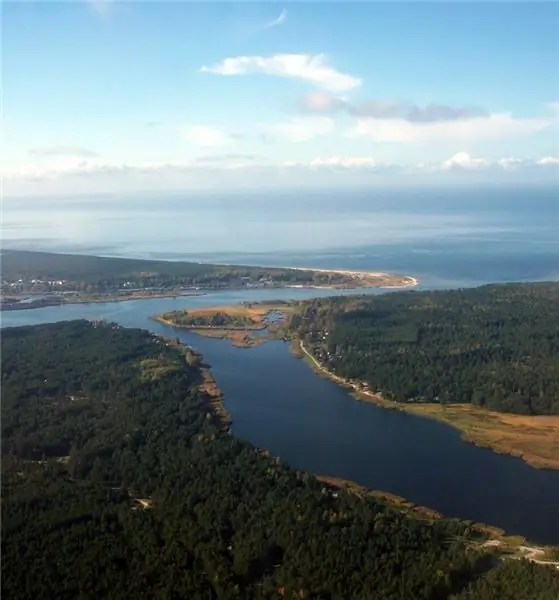
Rivers of Latvia either end their way in the waters of the Baltic Sea, or flow into rivers belonging to the basin of rivers, which in turn again flow into the waters of the Baltic.
Gauja river
The river passes through the territory of Latvia, partly being the natural border with Estonia. The total length of the river is 460 kilometers. Guaya is the longest river in the territory of Latvia from its source to its confluence.
The river is fed by three sources: snow (about 40%); rains; groundwater. With prolonged rains, the water in the river can rise significantly, threatening floods. In some cases, such temporary floods are even stronger than spring floods.
Dubna river
One of the Latvian rivers passing through several regions of the country: Kraslava; Daugavpils; Preilsky. The total length of the river channel is 105 kilometers.
The source of the river is the deep-water lake Tsarmanu. Then the river goes to the west and joins the waters of the Daugava on the territory of the city of Lebanon. On its way, the river in transit passes through several lakes: Tsarmanu; Sakovo; Anisimovo; Vishkyu; Luknas.
In its upper course (up to the mirror of Lake Luknas) Dubna resembles a mountain river. The current on this section of the path is fast, the bottom is rocky. The channel itself is sandwiched between high steep banks. The lower course is already quieter.
Ogre river
Ogre is an entirely Latvian river, with a length of 188 kilometers. The source is a small lake Siveninsh (the territory of the Vidzeme Upland). The river bed is very winding, but ultimately the waters of Ogre join the Daugava River in the territory of the city of the same name Ogre. The largest tributaries of the river are: Lichupe; Lobe; Aviekste.
Due to the meandering course of the river, the river attracts many boaters.
Lielupe river
The Lielupe is one of the few rivers wholly belonging to the territory of Latvia. The total length of the current is 119 kilometers. Before the confluence, the Lielupe is broken into sleeves. One flows into the waters of the Gulf of Riga, an arc - into the waters of the Western Dvina. In the upper reaches, the river forms a small peninsula known as the Rizhskoe Seaside.
Lielupe is the second most important river in the country. The source is formed by the confluence of two rivers: Memele; Musa. Moreover, the Lielupe itself is much shorter than the rivers that created it. So, the length of Memele is 191 kilometers, and Musa is 164 kilometers.
From the source and up to the confluence of its tributary Islice in the Lielupe, the river passes through the territory of a deep valley surrounded by high rocky banks. As you reach the plain, the high banks gradually turn into a gentle plain. Since the slope of the current is small, the Lielupe is typically a calm, unhurried current. The river makes its way through the territory of the Zemgale Plain and the Primorsky Lowland.
In total, the river has more than 250 tributaries. Lielupe collects water from many rivers, and therefore it develops widely during the spring flood. At the same time, not only flood meadows are subject to flooding, but also settlements located near the channel.






